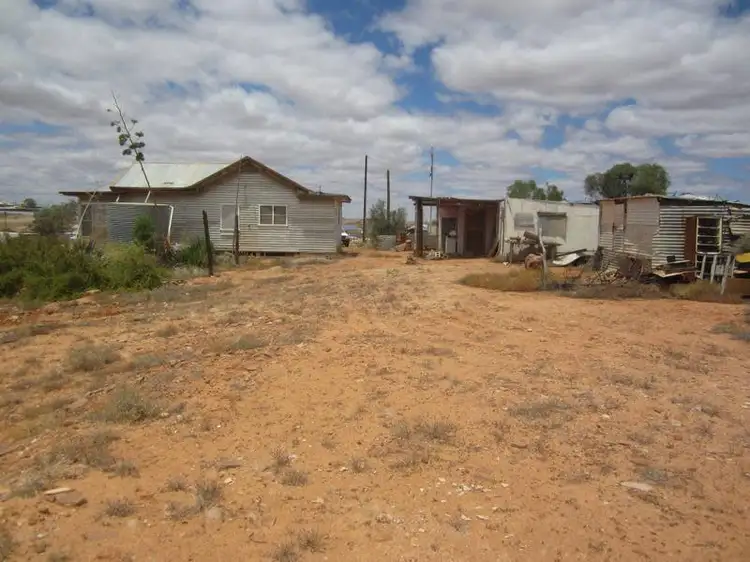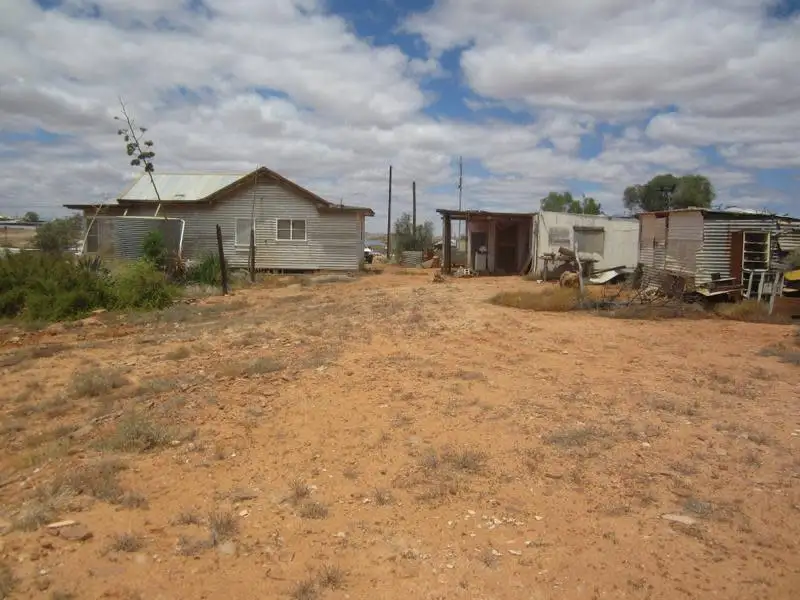Farina grew to reach a peak population of approximately 600 in the late 1800s. In its heyday, the town had two hotels (the Transcontinental and the Exchange) and an underground bakery, a bank, two breweries, a general store, an Anglican church, five blacksmiths, a school and a brothel. In 1909, 1,143 kilograms (2,520lb) iron meteorite was discovered north-east of the town.
Today nothing but stone ruins and the elevated railway water tank remain of the township. The post office closed in the 1960s and the railway line closed in the 1980s.
The town is no longer inhabited, with the closest residents now living at Farina station, visible to the west of the town. A bush camping area is maintained by the owners of Farina station.
In 2008 Farina Restoration Group was formed, and in May 2009, 30 people attended a 14-day restoration program at Farina.[7]
Volunteer efforts have been made to restore the town, including the repair of the bakery and the addition of informational signs
Farina grew to reach a peak population of approximately 600 in the late 1800s. In its heyday, the town had two hotels (the Transcontinental and the Exchange) and an underground bakery, a bank, two breweries, a general store, an Anglican church, five blacksmiths, a school and a brothel. In 1909, 1,143 kilograms (2,520lb) iron meteorite was discovered north-east of the town.
Today nothing but stone ruins and the elevated railway water tank remain of the township. The post office closed in the 1960s and the railway line closed in the 1980s.
The town is no longer inhabited, with the closest residents now living at Farina station, visible to the west of the town. A bush camping area is maintained by the owners of Farina station.
In 2008 Farina Restoration Group was formed, and in May 2009, 30 people attended a 14-day restoration program at Farina.[7]
Volunteer efforts have been made to restore the town, including the repair of the bakery and the addition of informational signs
Farina grew to reach a peak population of approximately 600 in the late 1800s. In its heyday, the town had two hotels (the Transcontinental and the Exchange) and an underground bakery, a bank, two breweries, a general store, an Anglican church, five blacksmiths, a school and a brothel. In 1909, 1,143 kilograms (2,520lb) iron meteorite was discovered north-east of the town.
Today nothing but stone ruins and the elevated railway water tank remain of the township. The post office closed in the 1960s and the railway line closed in the 1980s.
The town is no longer inhabited, with the closest residents now living at Farina station, visible to the west of the town. A bush camping area is maintained by the owners of Farina station.
In 2008 Farina Restoration Group was formed, and in May 2009, 30 people attended a 14-day restoration program at Farina.[7]
Volunteer efforts have been made to restore the town, including the repair of the bakery and the addition of informational signs
Farina grew to reach a peak population of approximately 600 in the late 1800s. In its heyday, the town had two hotels (the Transcontinental and the Exchange) and an underground bakery, a bank, two breweries, a general store, an Anglican church, five blacksmiths, a school and a brothel. In 1909, 1,143 kilograms (2,520lb) iron meteorite was discovered north-east of the town.
Today nothing but stone ruins and the elevated railway water tank remain of the township. The post office closed in the 1960s and the railway line closed in the 1980s.
The town is no longer inhabited, with the closest residents now living at Farina station, visible to the west of the town. A bush camping area is maintained by the owners of Farina station.
In 2008 Farina Restoration Group was formed, and in May 2009, 30 people attended a 14-day restoration program at Farina.[7]
Volunteer efforts have been made to restore the town, including the repair of the bakery and the addition of informational signs






